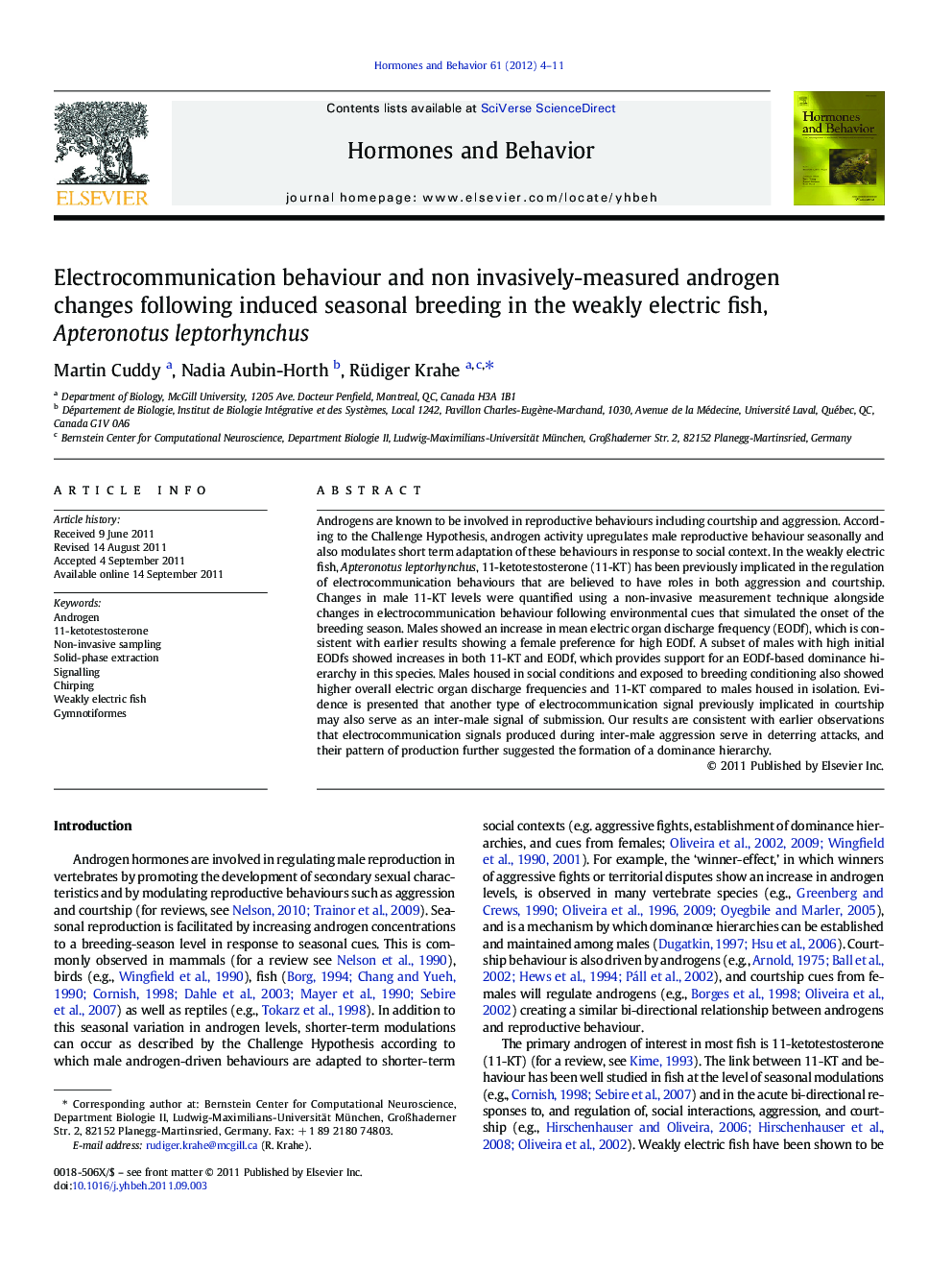| کد مقاله | کد نشریه | سال انتشار | مقاله انگلیسی | نسخه تمام متن |
|---|---|---|---|---|
| 323150 | 540516 | 2012 | 8 صفحه PDF | دانلود رایگان |

Androgens are known to be involved in reproductive behaviours including courtship and aggression. According to the Challenge Hypothesis, androgen activity upregulates male reproductive behaviour seasonally and also modulates short term adaptation of these behaviours in response to social context. In the weakly electric fish, Apteronotus leptorhynchus, 11-ketotestosterone (11-KT) has been previously implicated in the regulation of electrocommunication behaviours that are believed to have roles in both aggression and courtship. Changes in male 11-KT levels were quantified using a non-invasive measurement technique alongside changes in electrocommunication behaviour following environmental cues that simulated the onset of the breeding season. Males showed an increase in mean electric organ discharge frequency (EODf), which is consistent with earlier results showing a female preference for high EODf. A subset of males with high initial EODfs showed increases in both 11-KT and EODf, which provides support for an EODf-based dominance hierarchy in this species. Males housed in social conditions and exposed to breeding conditioning also showed higher overall electric organ discharge frequencies and 11-KT compared to males housed in isolation. Evidence is presented that another type of electrocommunication signal previously implicated in courtship may also serve as an inter-male signal of submission. Our results are consistent with earlier observations that electrocommunication signals produced during inter-male aggression serve in deterring attacks, and their pattern of production further suggested the formation of a dominance hierarchy.
► We used a non-invasive method for repeated 11-K-testosterone measurement in a weakly electric fish.
► Breeding season conditions led to increases in 11-KT and in the frequency of electric organ discharge in males.
► Males kept in isolation had lower 11-KT levels and EOD frequencies than fish held in groups.
► A communication signal previously thought to serve in courtship may also serve as a signal of submission.
Journal: Hormones and Behavior - Volume 61, Issue 1, January 2012, Pages 4–11